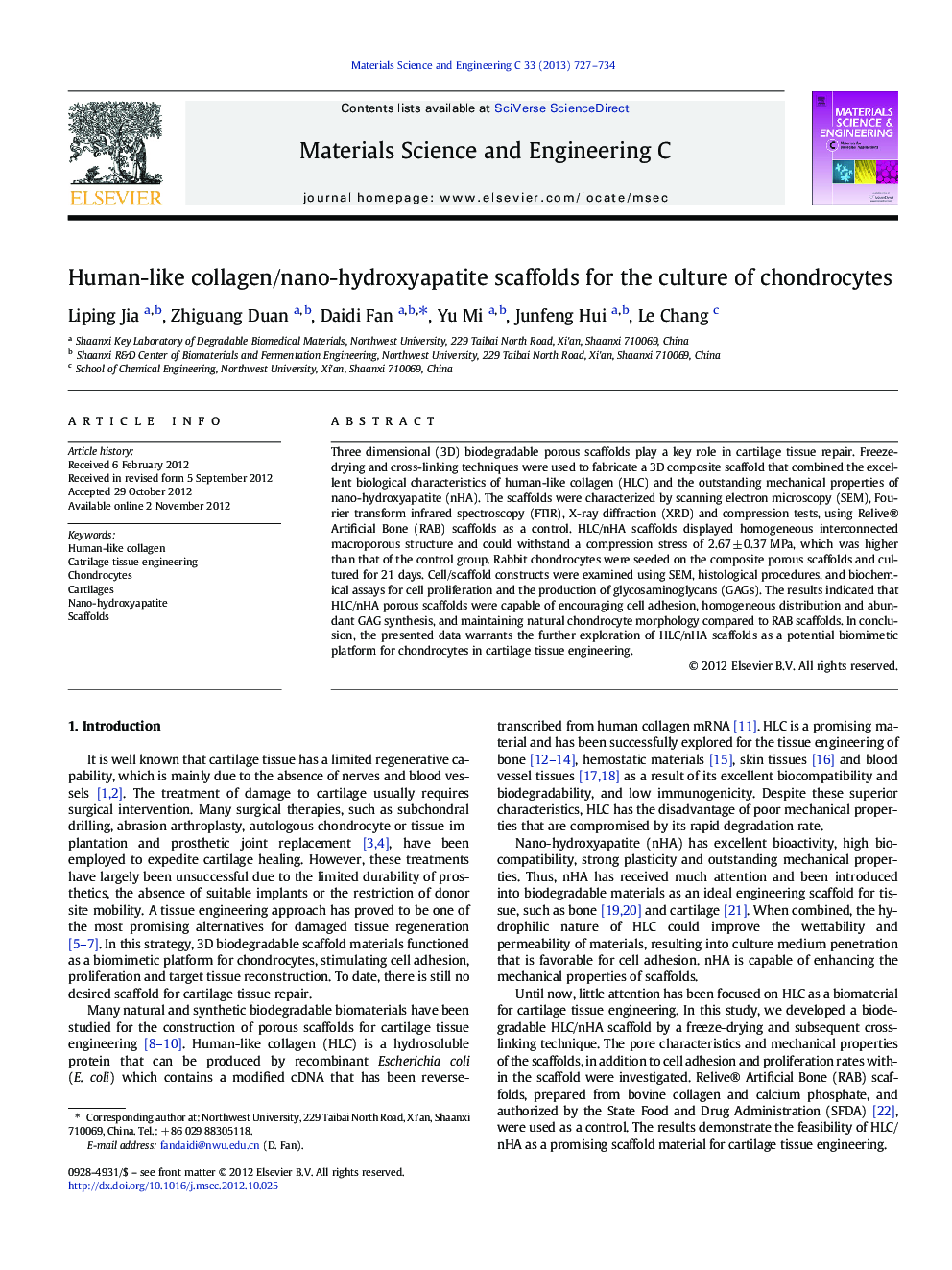| Article ID | Journal | Published Year | Pages | File Type |
|---|---|---|---|---|
| 1428874 | Materials Science and Engineering: C | 2013 | 8 Pages |
Three dimensional (3D) biodegradable porous scaffolds play a key role in cartilage tissue repair. Freeze-drying and cross-linking techniques were used to fabricate a 3D composite scaffold that combined the excellent biological characteristics of human-like collagen (HLC) and the outstanding mechanical properties of nano-hydroxyapatite (nHA). The scaffolds were characterized by scanning electron microscopy (SEM), Fourier transform infrared spectroscopy (FTIR), X-ray diffraction (XRD) and compression tests, using Relive® Artificial Bone (RAB) scaffolds as a control. HLC/nHA scaffolds displayed homogeneous interconnected macroporous structure and could withstand a compression stress of 2.67 ± 0.37 MPa, which was higher than that of the control group. Rabbit chondrocytes were seeded on the composite porous scaffolds and cultured for 21 days. Cell/scaffold constructs were examined using SEM, histological procedures, and biochemical assays for cell proliferation and the production of glycosaminoglycans (GAGs). The results indicated that HLC/nHA porous scaffolds were capable of encouraging cell adhesion, homogeneous distribution and abundant GAG synthesis, and maintaining natural chondrocyte morphology compared to RAB scaffolds. In conclusion, the presented data warrants the further exploration of HLC/nHA scaffolds as a potential biomimetic platform for chondrocytes in cartilage tissue engineering.
► Human-like collagen was first used to prepare cartilage tissue engineering scaffold. ► Genipin, a natural biological cross-linking agent, was introduced to treat scaffold. ► We chose market product as a control.
